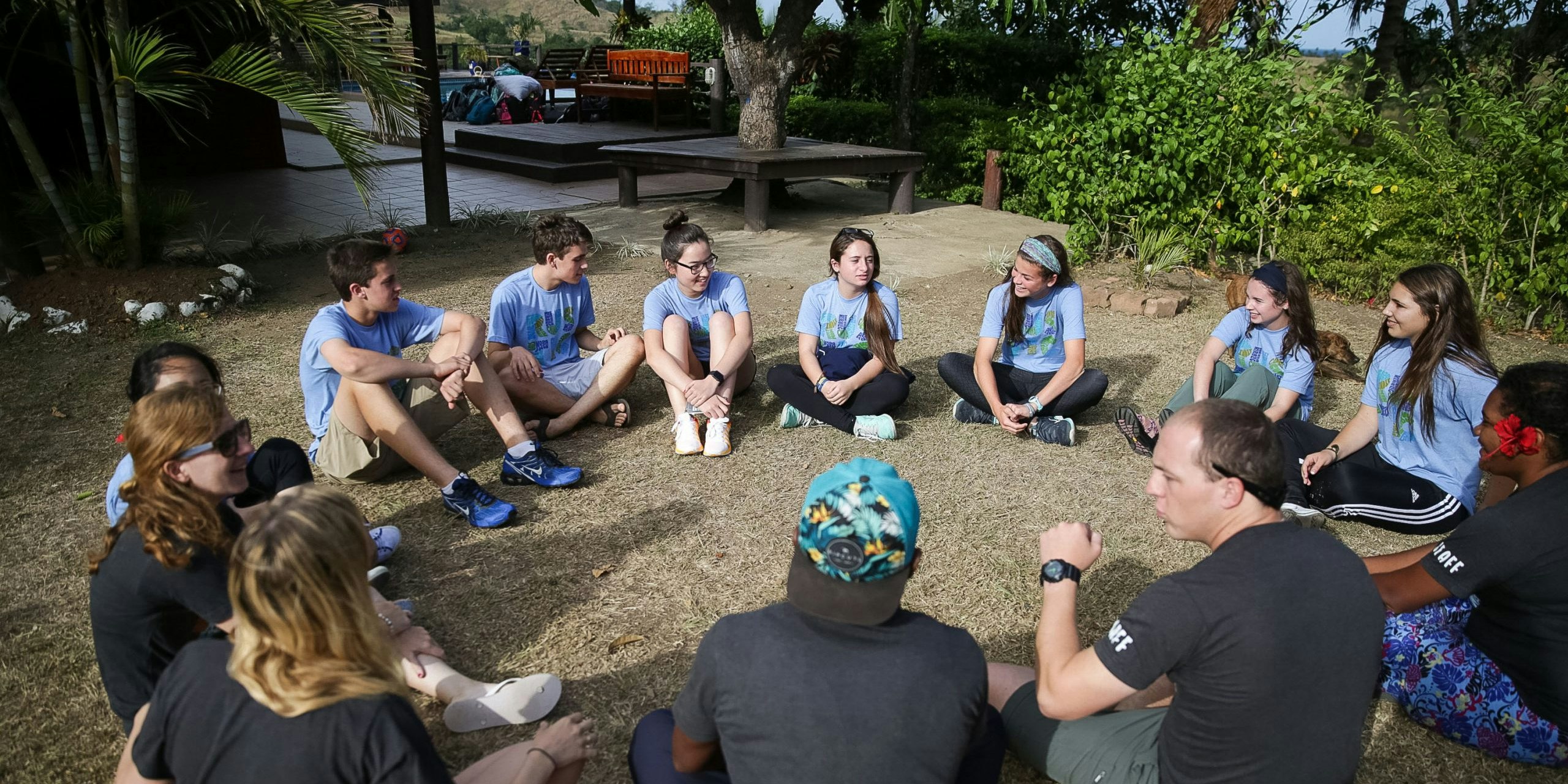- Author:
- Mary Rogelstad
- Published:
- July 20, 2021
- Favorites:
- Tagged In:
- School Group Travel Student Travel Parents
Best-selling author Matthew Dicks has a poster above his desk that reminds him of his former student Grace. She had attended 14 schools in nine years and had become a troubled teenager. Her parents took a controversial step to try to help her.
They had her forcibly escorted to a wilderness therapy program. When Grace returned, she had trouble relating to students her age. Then things changed.
Grace attended a storytelling workshop with Dicks. He taught her how to share her stories to connect with her peers. After he showed her she had a voice, there was a profound difference in her ability to interact with others. She made him that poster that says. “You make me mad in a good way.” She also continues to show her thanks and still comes to Dicks’ storytelling shows.
Not many teens have had the same experiences as Grace, but the power she found from telling stories applies to people from all different backgrounds.
“Stories are super connective and incredibly powerful at conveying ideas,” Dicks said. “You’re unlikely to read a PowerPoint presentation again, but you’ve probably watched a movie you love 20 times.”
The second workshop in Rustic Pathways’ Leadership Lab series – Finding & Telling Your Best Stories – will show why this is the case. Dicks will teach students how to use storytelling to connect with others, master the art of persuasion, and make an impact.

Best-selling author Matthew Dicks leads many storytelling seminars.
Dicks is an award-winning storyteller who has taught people across the globe how to use storytelling to relate with others. He will be joined by guest storytellers during the weeklong workshop in August.
The workshop will build on leadership skills students have learned in other programs, such as Rustic’s Global Youth Climate Summit or a Rustic travel program.

Students from 25 countries participated in Rustic Pathways’ Global Youth Climate Summit.
The Science of Storytelling
Science shows why storytelling is so powerful. Hearing stories activates multiple areas of the brain. Sensory regions light up when people describe what they saw, heard, or touched. Parts of the brain related to emotion, action, and memory also can easily be brought to life through stories.
Back in the 1940s, Canadian Donald Hebb hypothesized that “cells that fire together, wire together.” In other words, the more neurons in the brain that fire while hearing something, the more likely someone will remember it. His hypothesis has since been backed by other scientists.
Because of its influence on the brain, storytelling has played an integral part throughout history – from drawings on cave walls to the passing down of oral traditions. Today professionals in fields ranging from politics to marketing utilize stories to motivate people to act and make changes.
Neuroeconomist Dr. Paul Zak is among those who have studied how stories can do this. He tested the chemical changes in the brains of subjects while they heard a real life story about a father and his two-year-old son who was dying from cancer.
The study found the subjects had increases in two chemicals while listening to the story: cortisol, which focuses attention during times of stress, and oxytocin, which is associated with care, connection, and empathy. After the people tested heard the story, those who had the largest increase in oxytocin were the most likely to donate to a children’s nonprofit that helps kids with cancer.
Not all stories have to be about such deep subjects. Even everyday stories can allow people to remember messages and relate to the speaker. Taking part in international programs certainly provides many opportunities for teens to find their stories.
Making Memorable Connections
Stories that are memorable usually have two elements: emotion and visuals. A number of Rustic teens have been able to use their experiences to tell stories that have both.
A few years ago, alumnus Alex Boulet shared an essay about his participation in the Rustic program Climbing Kili. His story about this journey helped him get into The University of Pennsylvania. He began his essay:
“I spent the first fifteen years of my life on my tiptoes.”
And then later wrote:
“I climbed Kilimanjaro at five feet and 90 pounds. I saw the guide’s incredulous stare and could imagine his thoughts as he watched me approach, “Here comes another kid that we are going to have to Medi-Vac out of here.” Instinctively, I stood up higher on my toes once again.”

Alex Boulet (left) and another student from his group stay warm during a break from the hike.
His essay allowed readers to envision him standing on his toes and having someone stare at him. It also conjured up emotions about times when we all may have felt judged, different, or insignificant.
That is the power of storytelling. There is a well-known Hopi Native American proverb that sums it up when it says, “Those who tell the stories rule the world.”
Teens can get started by joining their international peers from August 9-13 for Rustic’s storytelling program. Spots are limited so there is plenty of time for each participating student to fully benefit from the program. More details are here.
Mary Rogelstad
Lead Editor
Mary is the Lead Editor at Rustic Pathways. She has been a writer and editor for nearly 20 years. Prior to covering student travel, Mary created content for the music education company J.W. Pepper & Son. She also was a writer and producer at CNN International and a communications director for a social service agency and a K-12 private school.
